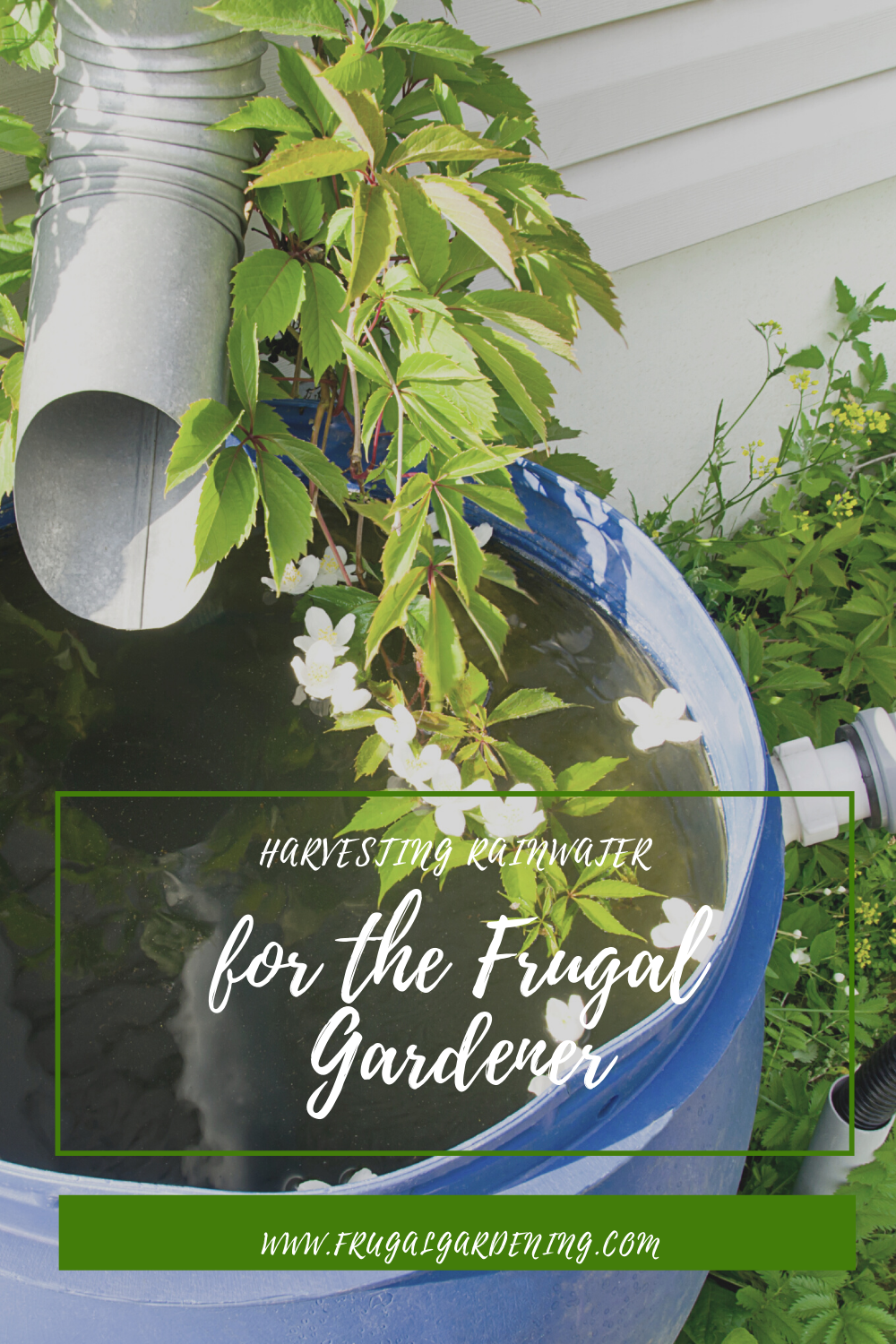
Gardening requires quite a bit of water. For many gardeners that means an increase in their water bill during the hot summer months. Statistics show that lawn and garden watering make up at least 40% of our total household water use. Frugal gardeners, however, can take advantage of rainwater by bringing back an age-old, low-tech system of collecting water from roofs and gutter systems into rain barrels, or cisterns as they have been called. By harvesting rainwater, you can keep your little corner of the world green, decrease stormwater runoff, and cut costs all at the same time.
Harvesting rainwater
One inch of rain on a 1,000 square foot roof will produce 600 gallons of water. Capture just some of that chemical-free rain in a container of any kind and you’ll be able to keep your veggie garden thriving and your flowers blooming all season, with no added expense. Your plants will thrive with the natural rainwater compared to water from municipal systems and the chemicals they typically add. Rainwater is a free source of soft water and also excellent for your houseplants.
Most rain barrels now come with the fittings for hooking up a hose, so getting harvesting rainwater is as simple as locating a barrel under a gutter and screwing in your hose. If you have a very small garden plot, or only use small containers, you can opt for a simpler system. Locate a barrel under a downspout and just dip your watering can in when you are planning to water your plants and containers. Each time it rains, you can store water up for the dry days or days you can’t water due to summer rationing schedules.
Due to the amount of water coming off a roof, it is important to have a plan for overflow. It’s important to have a valve to switch tanks. You can also go low tech and manually move the downspout away from the already full barrel to keep from having a mini Niagara Falls next to your buildings’ foundation.
As with anything that holds water, be sure your system has a child-proof, secure lid to prevent accidents. You might also want to screen the opening to your container, not only keeping debris out of the water but discouraging mosquitoes from breeding.
Where to get a water barrel?
Here’s a list of a few of the companies that carry water barrels and supplies to help you set up a water storage system. Remember, your system for harvesting rainwater can be as simple or as complex as you have time and money for. Just the savings from setting up one downspout and a barrel will make a difference. What frugal gardener doesn’t want to tap into a free resource?
Check local regulations
Before purchasing anything, be sure to check with the water department where you live to see if they are sponsoring a Rain Water Harvesting project. Many cities encourage the installation of rain barrels as a method of conservation. They may offer the barrels at a reduced price or give rebates if you purchase your barrel elsewhere. Some towns even offer workshops and supplies to build your own systems.
Rain barrels are one of the simplest, cheapest ways to conserve water, allowing you to treat rainwater as a resource and not a waste product. Harvesting rainwater on your property can help make your garden a more environmentally friendly space.
Installing a Rain Barrel
Rain Water Harvesting

Steph Coelho is a freelance writer gardening in zone 5b. She is a certified Square Foot Gardener and has taught various garden-related workshops. When she’s not digging in the dirt or writing, she’s cooking up fresh produce, running, or listening to her favorite podcasts.
Leave a Reply